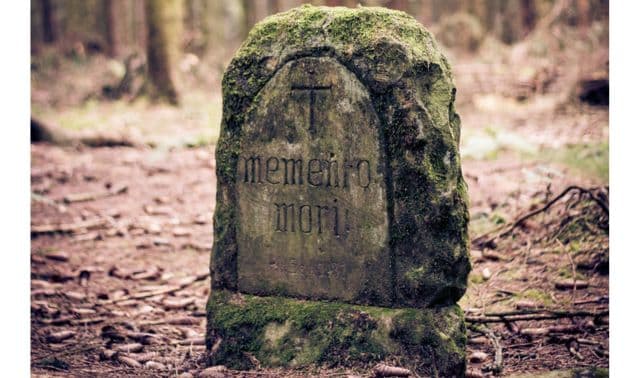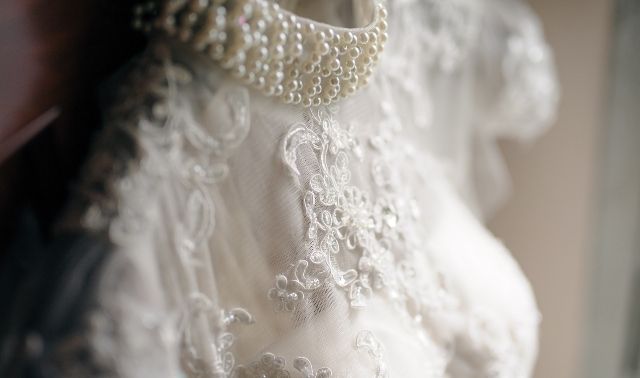Sign up for the Family Tree Newsletter! Plus, you’ll receive our 10 Essential Genealogy Research Forms PDF as a special thank you.
Get Your Free Genealogy Forms
"*" indicates required fields
Table of Contents
General Tips
Whether you’ve inherited a shoebox of old snapshots or an entire house filled with a lifetime of memories, becoming your family’s caretaker of the past is a weighty responsibility. It’s also a joy for those who understand the physical connection to your ancestors that old items can provide. Here are a few general tips on taming and caring for your entire family heirloom collection.
- Name your collection (ex: “The Johnson Family Collection”); think of it as more than just someone’s “stuff”
- Stock up on the proper archival supplies
- Learn the history behind each piece and write a provenance
- Encapsulate unstable mementos to prevent acid migration to other items
- Scan photos and documents only once, at high resolution
- Clean textiles before storing
- Vacuum family heirlooms using a diffuser
- Be wary of glass display cases due to prolonged light exposure
- Add ID to removable storage devices, like external hard drives and flash drives
- Check and adjust the date and time settings on your digital camera before taking photos or documenting items
Bibles
Consider yourself fortunate indeed if you inherited the family Bible, for it’s often a genealogical Good Book with family record pages that list births, marriages and deaths for decades. Preserve your treasure with these tips.
- Wash your hands before handling
- Keep the cover supported
- Work in a cool, low-light space
- Look for surprises tucked in the pages
- Compare the dates listed to the publication date
- Correctly preserve loose pages
- Scan with care
- Digitize the front and back covers and spine
- Digitize pages selectively
- Write a provenance if you can
- Cover with dark cloth when not in use
- Don’t store in a wooden box
- Store in a cool, dry location
Books and Magazines
Your family history collection might well include your ancestors’ books, magazines and other bound, made-for-the-public material like city directories or published histories. Use these easy steps for storing books and magazines safely, and read here for the full guidance.
- Keep books and magazines off the ground
- Handle publications with care
- Lightly clean books, but hire professionals for repairs
- Use archival-safe boxes and dust jackets to store
- Avoid pests and humid places
- Do not laminate pages
China
Nothing says “family” quite like using Grandmother’s wedding china for holidays and special occasions. But when it comes to caring for these fragile family keepsakes, do you know the best practices? Follow these tips to keep using your antique fine china for generations to come.
- Handle with bare hands
- Create a cushion on the counter and in the sink
- Wash pieces by hand
- Get teacups stain-free with baking soda and warm water
- Don’t display in direct sunlight
- Keep unglazed and hand-painted fine china dry
- Store china dishes and cups in short stacks
- Store heirloom china in boxes whenever possible
- Don’t wrap pieces in newspaper
- Store in an out-of-the-way location
- Get repairs done by a professional
Crystal and Glass
Don’t be afraid to use and enjoy Grandma’s crystal at your family gatherings. Many pieces of antique cut crystal and pressed glass are sturdier than they look and need only a little extra care to maintain their sparkling beauty.
- Determine if it’s crystal or glass
- Hand wash with care
- Do not use crystal or glass dishes for hot food
- Always store crystal and glass upright
- Avoid using the dishwasher
- Be aware of extreme temperature fluctuations (hot to cold, cold to hot) to avoid shattering
- Never use antique or vintage glass or crystal in the microwave or conventional oven
- Don’t store alcohol for long periods of time in heirloom crystal decanters
- Repurpose heirloom crystal or glass to other areas of your house
Furniture
Did you inherit a chair handcrafted by Great-great-granddad, the blanket chest where Grandma stored her linens, or the walnut desk from Dad’s office? With a little time and attention, you can preserve these heirlooms—and the memories that go with them—for future generations.
- Respect the integrity of the piece to preserve its value; avoid the temptation to paint, re-stain or otherwise alter its appearance
- Never use spray furniture polish, oils or modern cleaners on wood furniture
- Be careful when moving the piece
- Choose a safe location for display
- Don’t place heirloom furniture by a window or anywhere a shaft of sunlight may land
- Be on the lookout for pests
- Minimize situations that can create wear and tear
- Pay special attention to wicker furniture
- Properly care for leather furniture
- Be mindful of best practices for storage
- Write a provenance for the piece; ask relatives for more information
- Have pieces appraised and insured
Jewelry
Will your children, nieces and nephews know the story of the rings and brooches they find in your dresser drawer or jewelry box one day? These simple tips will help you preserve treasured heirloom jewelry and the stories that make them special.
- Establish provenance by photographing the item and making record of who owned it
- Use a magnifying glass or jeweler’s loupe to carefully examine watches, brooches, fraternal organization pins, wedding rings and charms for engraved names and dates
- Before cleaning, consult a professional jeweler for advice specific to your piece so that you can keep it in optimal condition
- Don’t be afraid to wear your heirloom jewelry, but be sure to handle with the utmost care
- Purchase the correct type of jewelry box with lined boxes, multiple compartments and a secure lid
- Maintain air quality and temperature control
- When possible, keep a set together instead of giving one daughter earrings; another, the bracelet; a third, the necklace
- Get pieces appraised and insured
- If your heirloom isn’t your style, talk with a jeweler about repurposing the piece into something new
Letters
Whether you inherit Grandma’s missives or find your Civil War soldier’s last letter home, here’s how to preserve these writings as part of your family history.
- Work on a clean surface with freshly washed hands, and avoid handling the letters more than necessary
- Remove and discard old rubber bands, but make note of how the letters are grouped
- If the paper is brittle and cracking, don’t force pages open; allow the loosely folded pages to sit undisturbed for a few hours
- Open the letters one at a time and remove any foreign objects, especially staples, straight pins or paper clips
- Digitize the letters by scanning them on a flatbed scanner (scan the envelopes, too, if you have them) at a resolution of 300 dpi (dots per inch)
- Place each letter with its envelope in an individual acid-free, lignin-free archival file folder
- Store the folders upright in a metal filing cabinet or acid-free archival document box located in an area of your home with consistent temperature and relative humidity
Linens
Today’s holiday table is more likely to be set with bamboo placemats than the carefully hand-stitched and ironed linens used by our great-grandmothers. Why not pull out your heirloom linens to celebrate special occasion with these tips?
- Start with what you know about the artifact’s history
- Handle carefully and always launder before storing
- Some relatively sturdy linens such as mid-century vintage tablecloths, napkins or towels, are fun to use and enjoy in your home
- Avoid hanging large linens for long-term display
- Old gravy stains, grease and other damage can be difficult to repair; consult a professional or embrace the blemishes
- Keep away from light when not in use
- Store your linens correctly by rolling or folding with acid-free tissue
Military Uniforms
Military uniforms are made tough and see a lot of action, which often leaves them worse for wear. But preserving your ancestor’s dress blues, red coats or camo greens doesn’t have to be a battle. Here are some basic steps to follow to preserve military uniforms for yourself or family members.
- Display your military uniform heirloom for only six months at a time
- Remove surface dust and dirt, then leave cleaning to the experts
- Protect the uniform from sunlight, moisture and insects
- Limited storage on a hanger is OK
- Preserve both the uniform and accessories in separate archival boxes for longer storage
- Store boxes in an interior closet free from extreme temperatures and moisture, and far away from pipes that may burst
Musical Instruments
If you have fond memories of singing Christmas carols around the family piano or tunes of yesteryear played on an old fiddle, be sure to properly care for heirloom musical instruments. Here are a few tips to get you started.
- Check regularly for signs of trouble and damage
- Wash your hands before handling or playing any musical instrument
- Be mindful of the different materials
- Clean before storing, especially for pianos, guitars, banjos, and other wood and stringed instruments
- Use custom cases, which are often the best place to store an instrument
- Store in a smart place, where temperature and humidity are regulated
- Don’t try to move a piano on your own; leave it to professionals
- Write down memories of who played the instrument, when they played it, and the kind of music they played
Newspaper Clippings
Does your family archive hold yellowed and crumbling news clippings from years gone by? If so, you have a lot more than an old newspaper in your hands. You own a piece of history that’s becoming more rare each day. Learn tips to properly preserve your family newspaper clippings archive.
- Digitize your clippings
- Create a searchable index using keywords and other information from each article
- Organize and create a filing system for originals
- Protect against acids with deacidification spray
- Store in suitable-sized archival boxes, folders and buffered acid-free tissue
Photos and Photo Albums
Photos
Your family photos don’t belong stuffed into that cardboard shoebox on your closet floor! Here are eight steps to set you and your pictures on the right path.
- Survey your collection
- Determine the provenance of the collection
- Notice similarities and differences
- Identify one image at a time
- Narrow it down—it’s OK to throw out a photo
- Label and scan
- File by family name or chronological order
Victorian Photo Albums
Elaborate, heavy Victorian albums gained popularity with the rise of portrait photography in the mid-19th century. Care for your heirloom antique album as you would any special book, with extra consideration for the photographs inside.
- Wash your hands
- Take note of the album’s materials
- Protect the pages
- Check the back and edges of the photos
- Use a digital camera to photograph pages
- Store safely
- Isolate foreign objects
- Don’t try to DIY repairs
- Consider context of the photo arrangement
“Magnetic” Photo Albums
Almost every family has at least one old “magnetic” album, usually filled with deteriorating color prints. However, these albums weren’t really magnetic. Instead, regular acidic paperboard was coated with a grid of sticky wax. Unfortunately, none of these materials was manufactured for long-term preservation of the contents. Use these tips to rescue and preserve your precious family photos.
- Be proactive about getting the photos out of the album
- Take photos of the album
- Organize your digital pictures
- Carefully remove images from the album
- Scan high-res versions of the photos
- Store your photos in an acid-free box or archival album
- Create a new photo book
- Write down the album’s history
Quilts
Follow these sew-savvy hints to keep your heirloom quilt in tiptop shape and save its history.
- Document your quilt’s history
- Use the age of the quilt (greater or less than 50 years old is a good gauge) to determine best methods for cleaning
- Be on the lookout for fabric-destroying pests
- Where’s the best place to store an old quilt? On an unused bed!
- Research best practices for other storage options (hanging, boxed, wooden drawer, etc.)
Recipe Cards
Handwritten recipes carefully copied onto whimsical recipe cards deserve to be preserved as much as any diary or journal. Follow these six steps to keep your heirloom recipe cards safe and ready for another family gathering.
- Prep against deterioration by storing and handling like other paper objects
- Scan both sides of the card at 300 dpi resolution
- Share card scans digitally by creating virtual collections or uploading images to an online photo book
- Place cards in archival-quality plastic sleeves
- Be selective about recipe boxes
Silverware
Afraid to use your precious heirloom antique silverware? Don’t be! Caring for silver pieces doesn’t have to mean hours of polishing. Just follow these eight easy steps.
- Keep tarnish away with regular use
- Don’t worry if you don’t have a full set; use the pieces you do have
- Wash hands before touching
- Avoid corrosive ingredients
- Polish carefully
- Store in silver cloth or with anti-tarnish paper
- Just say no to plastic wrap
- Display heirloom silver pieces throughout your home
Sports Memorabilia
Whether it’s your grandfather’s baseball card collection or your own jersey, learn how to best store and preserve sports memorabilia.
- Don’t use creams or oils to clean vintage leather
- Store leather items with care
- Display souvenirs in a dust-proof acrylic case designed for souvenirs
- Keep trading cards under wraps
- Preserve paper items like ticket stubs and programs using an acid-free envelope or archival plastic sleeve
- Digitize newspaper clippings
- Wash worn items before storing
- Frame jerseys
- Save signatures by storing item in an acid-free archival box
- Gently clean wooden bats with a soft cloth
- Store ball caps lightly stuffed with acid-free tissue
Timepieces
Many of us have heirloom timepieces that have been passed down for generations. Learn how caring for clocks and watches means more than an occasional wind.
- Take time to keep your vintage clocks and wristwatches in working order
- Store your vintage or unworn watch with a small packet of silica gel placed inside the individual watch box or case to prevent mildew
- Dust clocks regularly with a soft dry cloth and avoid any polish or aerosol cleaners
- If your heirloom clock or watch requires expensive repair, consider enjoying it as a non-working artifact
- Mechanical clocks need regular maintenance to run smoothly and accurately
- Put your genealogical skills to work by learning more about your ancestor and the timepiece he or she owned
- Connect the timepiece to your family with family photos showing the clock in your ancestor’s home or the watch worn by a previous owner
- Expand the history of your heirloom to make it the focus of an ancestor sketch or creative writing exercise
Wedding Dresses
Wedding dresses are a delicate piece of family history that deserve careful attention to detail and proper storage. Use these tips to preserve your heirloom wedding gown.
- Wear white cotton gloves when handling
- Inspect the garment for damage and deterioration
- Make repairs
- Hang for short-term use
- Dry clean before storing
- Select the best supplies for long-term storage
- Store wedding accessories separately























